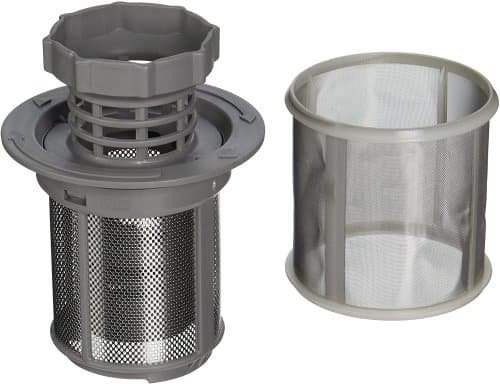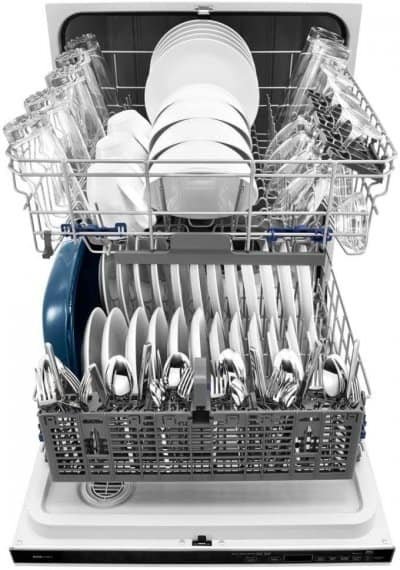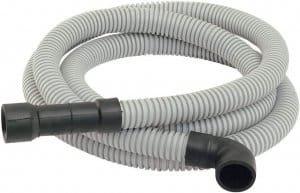A clogged dishwasher can be a real headache. Not only does it prevent you from properly cleaning your dishes, but it can also lead to leaks and other problems if left unaddressed. Fortunately, unclogging a dishwasher is a relatively straightforward process that can be done with just a few tools and some basic knowledge. In this article, we will provide a step-by-step guide on how to unclog a dishwasher, along with some common FAQs.
Table of Contents
Step 1: Identify the Source of the Clog
The first step in unclogging your dishwasher is to identify the source of the clog. There are a few common causes of clogs in dishwashers, including food particles, mineral buildup, and foreign objects (such as utensils or other debris). Here’s how to determine which one is causing the issue:
- Check the Filter:
The filter is the first place you should check for clogs. Remove the bottom rack of your dishwasher and locate the filter (usually located in the back). Check to see if there are any visible clogs or blockages.
- Inspect the Spray Arm:
The spray arm is responsible for distributing water throughout the dishwasher. If it’s clogged, water may not be able to circulate properly. Remove the spray arm and inspect it for clogs.
- Look for Foreign Objects:
It’s not uncommon for small items like utensils or other debris to find their way into the dishwasher and cause clogs. Check the bottom of your dishwasher and look for anything that might be causing the issue.
Step 2: Clean the Filter
Once you’ve identified the source of the clog, it’s time to start cleaning. The first step is to clean the filter. Here’s how:

- Remove the Filter:
Start by removing the filter from your dishwasher. Most filters simply twist or snap off.
- Clean the Filter:
Use a soft brush or cloth to gently scrub away any food particles or debris that may be stuck to the filter. Rinse the filter thoroughly with warm water.
- Reinstall the Filter:
Once the filter is clean, simply snap or twist it back into place.
Step 3: Clean the Spray Arm

If the spray arm is clogged, you’ll need to clean it as well. Here’s how:
- Remove the Spray Arm:
Start by removing the spray arm from your dishwasher. This is usually done by unscrewing a cap or removing a clip.
- Clean the Spray Arm:
Use a toothbrush or other soft brush to gently scrub away any debris or buildup that may be stuck to the spray arm. Rinse it thoroughly with warm water.
- Reinstall the Spray Arm:
Once the spray arm is clean, simply screw the cap back on or reattach the clip.
Step 4: Check the Drain
If your dishwasher is still clogged after cleaning the filter and spray arm, the issue may be with the drain. Here’s how to check:
- Locate the Drain:
The drain is usually located at the bottom of the dishwasher, underneath the filter.
- Clear any Debris:
Check the drain for any visible clogs or debris. Use a soft brush or cloth to clear away any buildup.
- Run Hot Water:
Once you’ve cleared any visible debris, run hot water through the drain to help clear away any remaining buildup.
Step 5: Run a Cycle
Once you’ve cleaned the filter, spray arm, and drain, it’s time to run a cycle and see if the clog has been cleared. Here’s how:
- Load the Dishwasher:
Load your dishwasher with dirty dishes as you normally would.
- Run a Cycle:
Start a normal cycle and let your dishwasher run its full cycle.
- Check for Clogs:
Once the cycle is complete, check your dishwasher for any remaining clogs or blockages. If you still notice any issues, repeat steps 2-4 and run another cycle.

How often should I clean my dishwasher?
It’s a good idea to clean your dishwasher every few months to prevent buildup and clogs. You may need to clean it more frequently if you notice any issues.
Can I use vinegar to clean my dishwasher?
Yes, vinegar is an effective and natural cleaner that can be used to clean your dishwasher. Simply pour a cup of vinegar into the bottom of your empty dishwasher and run a cycle on the hottest setting.
What should I do if my dishwasher is still clogged after following these steps?
If your dishwasher is still clogged after following these steps, you may need to call a professional plumber or appliance repair service to help diagnose and fix the issue.
How can I prevent future clogs in my dishwasher?
To prevent future clogs, make sure to scrape any excess food off your dishes before loading them into the dishwasher. You can also run hot water through your sink for a few minutes before starting the dishwasher to help flush out any debris in the pipes.
How to unclog dishwasher drain?
Unclogging a dishwasher drain is relatively easy and can be done in a few simple steps.
First, locate the drain at the bottom of the dishwasher. You may need to remove the lower rack or kick panel to access it. Once you have located the drain, use a wet/dry vacuum to suck out any debris that may be blocking it. If this doesn’t work, try using a plunger to unclog it. Place the plunger over the drain and press down firmly several times until you feel resistance. This should dislodge any blockage in the pipe.
If neither of these methods works, you may need to disassemble the dishwasher and remove any clogs manually with a pair of pliers or other tools. Once all clogs have been removed, reassemble your dishwasher and test it by running a cycle with hot water and detergent.
How to unclog dishwasher hose?
Unclogging a dishwasher hose can be done in a few simple steps.
First, you should disconnect the dishwasher from the power source and turn off the water supply. Then, remove the drain hose from the sink drain or garbage disposal to access the clog. You may need to use pliers or a screwdriver to loosen any clamps that are holding it in place. Once you have removed the hose, inspect it for any blockages or debris that could be causing the clog. Use a brush or vacuum to remove any food particles or other debris that may be stuck in the hose.
Once all of the debris has been removed, reconnect the drain hose and reattach it to either the sink drain or garbage disposal. Finally, turn on both the power supply and water supply before running a test cycle with no dishes in order to make sure everything is working properly.
How to unclog dishwasher drain hose?

Unclogging a dishwasher drain hose is a relatively simple process. The first step is to locate the drain hose. This can usually be found at the back of the dishwasher, near the bottom. Once you have located it, disconnect the hose from both ends and check for any blockages or debris. If any are present, use a plumber’s snake or other tool to remove them.
Once all blockages have been removed, reconnect the hose and run hot water through it to flush out any remaining debris. After this is done, turn on your dishwasher and run an empty cycle to test that it is draining properly. If there are still issues with clogging after this, you may need to replace the drain hose altogether.
How to unclog dishwasher drain line?
Unclogging a dishwasher drain line can be done in a few simple steps.
First, you’ll need to locate the drain line. This is usually found at the base of your dishwasher, near the water supply valve. Once you’ve located it, you’ll need to disconnect any hoses or clamps that are connected to it. Then, use a wet/dry vacuum or a plunger to try and remove any blockages from the line. If this doesn’t work, you may need to use a plumbing snake to break up any build-up inside the pipe.
Finally, once any blockages have been removed, flush out the line with hot water and vinegar solution. This will help dissolve any remaining debris and help keep your drain line clear in the future. Once finished, reconnect any hoses or clamps and run a cycle on your dishwasher to make sure everything is working properly.
How to unclog dishwasher filter?

Unclogging a dishwasher filter is a relatively simple process. First, locate the filter in your dishwasher. Most filters are located at the bottom of the dishwasher, beneath the lower spray arm. Once you’ve located it, remove it from the dishwasher and inspect it for any clogs or debris. If you find any, use a small brush to gently remove them.
Next, fill your sink with warm water and add a few drops of dish soap. Place the filter in the soapy water and let it soak for about 10 minutes. This will help loosen any stubborn debris that may still be stuck in the filter. After it has soaked, take a soft-bristled brush and scrub away any remaining dirt or grime from inside the filter.
Finally, rinse off the filter with warm water to make sure all soap residue is removed before placing it back into your dishwasher.
How to unclog dishwasher spray arm?

Unclogging a dishwasher spray arm is fairly simple and can be done in a few steps.
First, remove the spray arm by unscrewing it from the dishwasher. Then use a small brush to clean out any food particles or other debris that may be clogging the holes in the spray arm. If necessary, use a toothpick or similar tool to remove any stubborn particles. Once the spray arm is clear of debris, reattach it to the dishwasher and run a cycle with hot water to ensure that it is fully unclogged.
If your dishwasher continues to have problems after cleaning out the spray arm, you may need to check for blockages in other parts of the dishwasher such as the filter or drain hose. It’s also possible that there could be an issue with your water supply line or pump motor which would require professional repair.
How to unclog dishwasher air gap?
Unclogging a dishwasher air gap is a relatively straightforward process. The first step is to turn off the water supply to the dishwasher. Then, locate the air gap and remove it from its mounting. This can be done by unscrewing the mounting nut that holds it in place.
Next, use a small brush or pipe cleaner to remove any debris that may be clogging the air gap’s drain holes. Once this is done, replace the air gap and re-secure it in its mounting with the nut. Finally, turn on the water supply again and check for any leaks. If there are no leaks, then your dishwasher’s air gap should now be unclogged and working properly.
Conclusion:
A clogged dishwasher can be a frustrating problem, but it’s usually easy to fix with just a few simple steps. By identifying the source of the clog, cleaning the filter and spray arm, checking the drain, and running a cycle, you can unclog your dishwasher and get back to clean dishes in no time. Remember to clean your dishwasher regularly to prevent future clogs and keep your appliance in good working order.


2 thoughts on “How to Unclog Dishwasher: A Step-by-Step Guide”
Comments are closed.